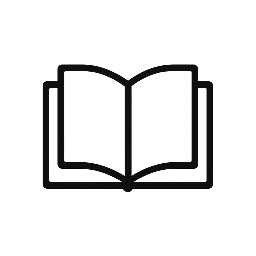Publications
SEMT
Books
Structured Epistemic Truth. Volume I (2025)
Structured Epistemic Truth – Volume I lays out the foundational structure of the SEMT framework — a layered model of truth that integrates objective verification, inductive convergence, deductive coherence, and indeductive unfolding.
Through a series of conceptual chapters and structural explorations, the book rethinks classical problems in logic, mathematics, and computation, including Gödel’s incompleteness, the Continuum Hypothesis, and P vs NP.
Rather than offering a fixed theory, Structured Epistemic Truth opens a framework: one where truth is not static, but structured — evolving through epistemic layers over time.
Structured Epistemic Truth. Volume II (2025)
An expansion on SEMT as an epistemic and developmental method.
Coming soonSEMT & Technology (Planned 2026)
On the technical applications of SEMT in AI and education.
Coming soonArticles
Foundation
Core theoretical texts establishing the layered logic and structural principles of the SEMT framework.
📦 SEMT Foundation – Article Bundle
Get all five foundational SEMT articles in a single, structured package. Ideal for researchers, educators, and anyone looking to deeply understand the layered architecture of epistemic truth.
- Objective Truth as Verification
- Inductive Truth: Stabilization Over Models
- Deductive Epistemic Truth in Formal Logic
- Verifiability in Structured Epistemic Systems
- The Structure of Truth in Multi-layered Epistemics
Buy full bundle on Gumroad
📄 SEMT Foundation – Individual Articles
Objective Truth as Verification
This article presents the first and most basic layer of the SEMT framework — objective truth. It outlines how truth can be understood through formal verifiability, grounding certainty in systematic epistemic accessibility.
Buy on GumroadInductive Truth: Stabilization Over Models
Here, truth emerges not from certainty but from convergence — inductive truth forms when statements stabilize across varying epistemic environments. A key layer for understanding learning, probability, and long-term inference.
Buy on GumroadDeductive Epistemic Truth in Formal Logic
This piece explores deduction as a mode of epistemic grounding. It analyzes proof as a structural tool, showing how deductive truth occupies a unique, bounded space within the SEMT hierarchy of knowability.
Buy on GumroadVerifiability in Structured Epistemic Systems
Expanding on formal logic and epistemic modalities, this article explores how verifiability shapes truth in structured reasoning systems. Originally submitted to Studia Logica, it formalizes core aspects of SEMT’s architecture.
Buy on GumroadThe Structure of Truth in Multi-layered Epistemics
This integrative paper synthesizes the layered nature of SEMT. It positions each truth mode (objective, inductive, deductive, etc.) within a coherent architecture, offering a unified philosophical and logical perspective.
Buy on GumroadApplication
Articles that apply the SEMT framework to complex problems in logic, AI, verification, and epistemic systems under constraint.
Truth Without Proof: The Continuum Hypothesis and Incompleteness
This article applies SEMT to classical undecidability results. It reinterprets Gödel’s incompleteness and the Continuum Hypothesis through a multi-layered truth model, offering epistemic structure where standard logic halts.
Buy on GumroadStructured Epistemic Truth for Bounded AI
What does truth mean for agents with limited memory and computation? This article extends SEMT to RAM-bounded systems, presenting a trivalent model for constrained verification and epistemic reach.
Buy on GumroadP ≠ NP as a Boundary of Objective Truth
This paper recasts P vs NP within SEMT’s framework, suggesting it is not just a computational puzzle but a structural boundary for verifiability — where objectivity meets inaccessibility.
Buy on GumroadEmergent Epistemic Problems
Some problems aren’t hard — they grow. This piece introduces emergent epistemic strain as a structural feature in formal systems, where complexity escalates across truth layers despite finite axioms.
Buy on GumroadEpistemic Structure in AI and Society
Bridging epistemology and ethics, this article explores how layered models of truth can clarify discourse, transparency, and agency in embedded AI systems. Originally developed for philosophy of tech journals.
Buy on GumroadSEMT in Practice: A Follow-up
This short article reflects on applied use of SEMT in organizational and educational contexts. It distills core lessons from prototype implementation and theory-led design.
Buy on GumroadPhilosophical
Reflective and structural explorations of epistemic meaning, agency, and metaphysical layering within SEMT.
Truth in Time: A Structured Epistemic Model of Truth
This essay reframes truth as a temporal process. Drawing on Peirce and Pirsig, it introduces the concept of indeductive unfolding — a way of understanding knowledge as something that evolves structurally across time, beyond proof or convergence.
Read PDFEpistemic Layers in Theoretical Computer Science
A conceptual reading of TCS through SEMT. The manuscript shows how the objective, inductive, and deductive layers reshape our understanding of algorithms, computability, and formal theory.
Draft under developmentSemantic Gravity and Power: Agency in Layered Systems
This article explores the intersection of epistemology, semantics, and power. It shows how “epistemic weight” — the structural gravity of ideas — affects agency, discourse, and the moral architecture of systems.
Read PDFSubmitted Manuscripts
Peer-reviewed articles under consideration that expand SEMT’s structural epistemology in bounded systems and objective theory.
Stratified Verifiability and Bounded Epistemology
A meta-epistemological model proposing that truth in bounded systems must be layered. The manuscript lays out a formal architecture for integrating classical and post-classical truth theories within a constrained structural framework.
Read PDFStructured Epistemic Truth for Bounded AI (Theoretical version)
A theoretical version of the applied AI article, this version focuses on how bounded memory systems reshape the logic of verification. Proposes a trivalent truth model grounded in capacity, not just formality.
Read PDFCITM-SECTION
Books
Cracks in the Machine (CITM)
Structural freedom beyond determinism — a layered exploration of agency, recursion, and transformation in constrained systems.
